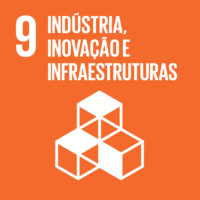Ciência_Iscte
Publicações
Descrição Detalhada da Publicação
Using interpretive structural modeling (ISM) to detect and define initiatives that facilitate hemodynamic laboratory management
Título Revista
International Transactions of Operations Research
Ano (publicação definitiva)
2025
Língua
Inglês
País
Reino Unido
Mais Informação
Web of Science®
Scopus
Google Scholar
Esta publicação não está indexada no Overton
Abstract/Resumo
Healthcare organizations are constantly changing—as are many companies in other business sectors—and the quest for ways to improve requires these organizations to examine continuously the processes involved in their daily activities. This study sought to analyze hemodynamic laboratories’ operating activities using problem structuring methods. The main aims were to understand underlying processes more fully and to delineate initiatives that can facilitate better management (e.g., the use of cutting-edge technology based on artificial intelligence). The data analysis focused on the particular case of the Laboratório de Hemodinâmica do Hospital de Santa Marta (LHHSM) (Santa Marta Hospital Hemodynamic Laboratory) and relied on interpretive structural modeling. The data were collected during a brainstorming session with a panel of experts in the selected area and combined with the key concepts identified by a literature review of hemodynamic laboratory management studies. The results provide a better understanding of the relationships between variables that influence the dynamics of these laboratories, thereby providing the LHHSM with the information needed to select appropriate improvement initiatives. A follow-up session with the LHHSM service director was held to consolidate the findings. This study's contributions and limitations were also defined.
Agradecimentos/Acknowledgements
--
Palavras-chave
Artificial intelligence-based technology,Hemodynamic laboratory business management,Problem structuring method (PSM),Interpretive structural modeling (ISM)
Classificação Fields of Science and Technology
- Economia e Gestão - Ciências Sociais
Contribuições para os Objetivos do Desenvolvimento Sustentável das Nações Unidas
Com o objetivo de aumentar a investigação direcionada para o cumprimento dos Objetivos do Desenvolvimento Sustentável para 2030 das Nações Unidas, é disponibilizada no Ciência_Iscte a possibilidade de associação, quando aplicável, dos artigos científicos aos Objetivos do Desenvolvimento Sustentável. Estes são os Objetivos do Desenvolvimento Sustentável identificados pelo(s) autor(es) para esta publicação. Para uma informação detalhada dos Objetivos do Desenvolvimento Sustentável, clique aqui.

 English
English



